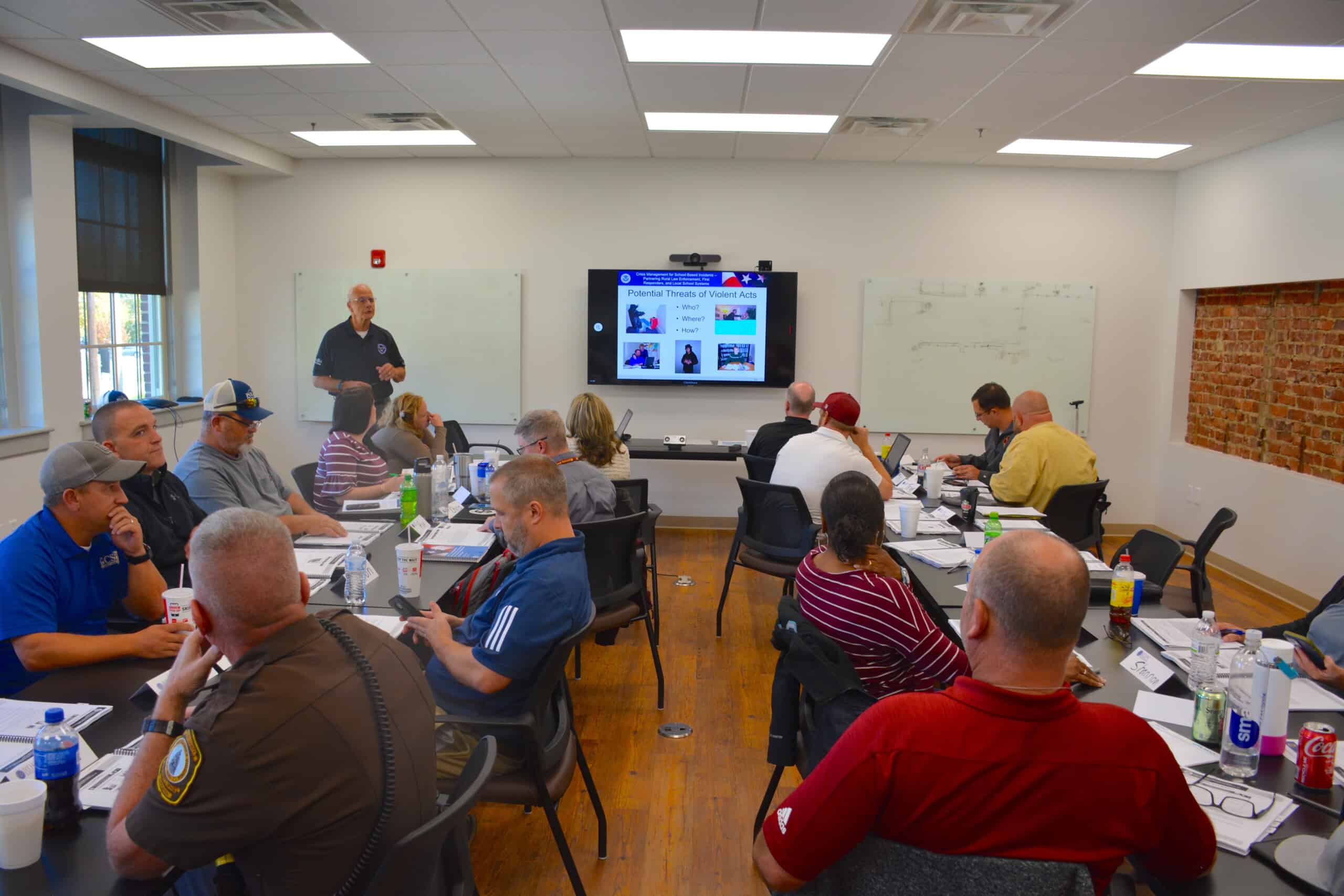School administrators attend Crises Management Class

William Paine/The Patriot
Pulaski County School Administrators and law enforcement attend a crisis management class dealing with school-based emergency incidents.
By WILLIAM PAINE
The Patriot
Last Friday, the Pulaski County Board of Supervisors hosted an eight-hour course focusing on crisis management for school-based emergency incidents. The class was attended by Pulaski County school administrators, law enforcement, school resource officers and emergency management professionals with the goal of learning about enhancing student safety and emergency response preparedness.
The class was sponsored by the Federal Emergency Management Agency and Homeland Security in collaboration with the Rural Domestic Preparedness Consortium. All costs for this class were covered by these organizations. As part of this consortium, the University of Findley in northern Ohio specializes in dealing with critical incidents that involve injury or death of students and school staff. Findlay University’s Michael Webber gave the presentation.
“We talk about prevention and planning for critical events,” said Webber. “So, we talk about what their emergency operating plan looks like and how to handle different events at your school. We talk about doing a vulnerability assessment. It’s an all-hazards approach to critical events. So, we talk about response to a tornado, earthquake or a shooter. We talk about what to do if you have to make an evacuation of your school, then make a reunification with the parents after an event and what that’s going to look like. We also talk about the recovery segment and how we’re going to help people find that new normal.”
Though it is an “all hazards approach” to emergency situations, Webber admits that demand for the class skyrocketed after the school shootings in Uvalde, Texas. Webber has traveled all around the country giving these classes.
“If you look at any type of shooting, there’s always red flags that come out afterwards,” said Webber. “There are always people coming out saying, ‘I knew that was going to happen,’ but they never came forward. So, a big focus with this program is to talk to your students and talk to your staff about what those warning flags look like. It’s also focused on saying something to the school. For example, if a student has a friend that’s into cutting or if they’re moving toward a suicide, they need to let the school know. When we’re talking about threat assessment, it’s about identifying the red flags that that person usually generates prior to the incident and finding a way of interdicting with that student and taking them off that pathway to violence. Then getting them, in many cases, the help that they need.”
Brad Wright, Pulaski County’s Emergency Management Coordinator, worked with County Administrator Jonathan Sweet to bring this emergency preparedness class to Pulaski.
“The class is very important because should an emergency situation arise, it’s crucial to have school officials working in close coordination with law enforcement,” said Wright. “This class gives school officials a lesson in best practices in dealing with emergencies.”
““Hosting this event is just another example of their efforts to assist with the enhancement of our institutions’ preparedness for an array of possible incidents and emergencies we hope never occur in our community,” added Sweet.
Jennifer Bolling, Principal of Pulaski County High School, was among those in attendance at the class, which was held at the County Administration Building.
“I do appreciate how this presenter has given us a specific form to follow,” said Bolling. “It’s a very systematic way to go back into your school and implement the safety things that he has noted for us to do. He’s shown us a lot of different ways to look at what we’re doing to see if we have vulnerabilities and then to address those, so as to make our schools even safer.”
“This is not something they learned in college. So, it’s really hard to expect them to know what to do when you don’t have any training with it. This takes school officials to the next level.”
